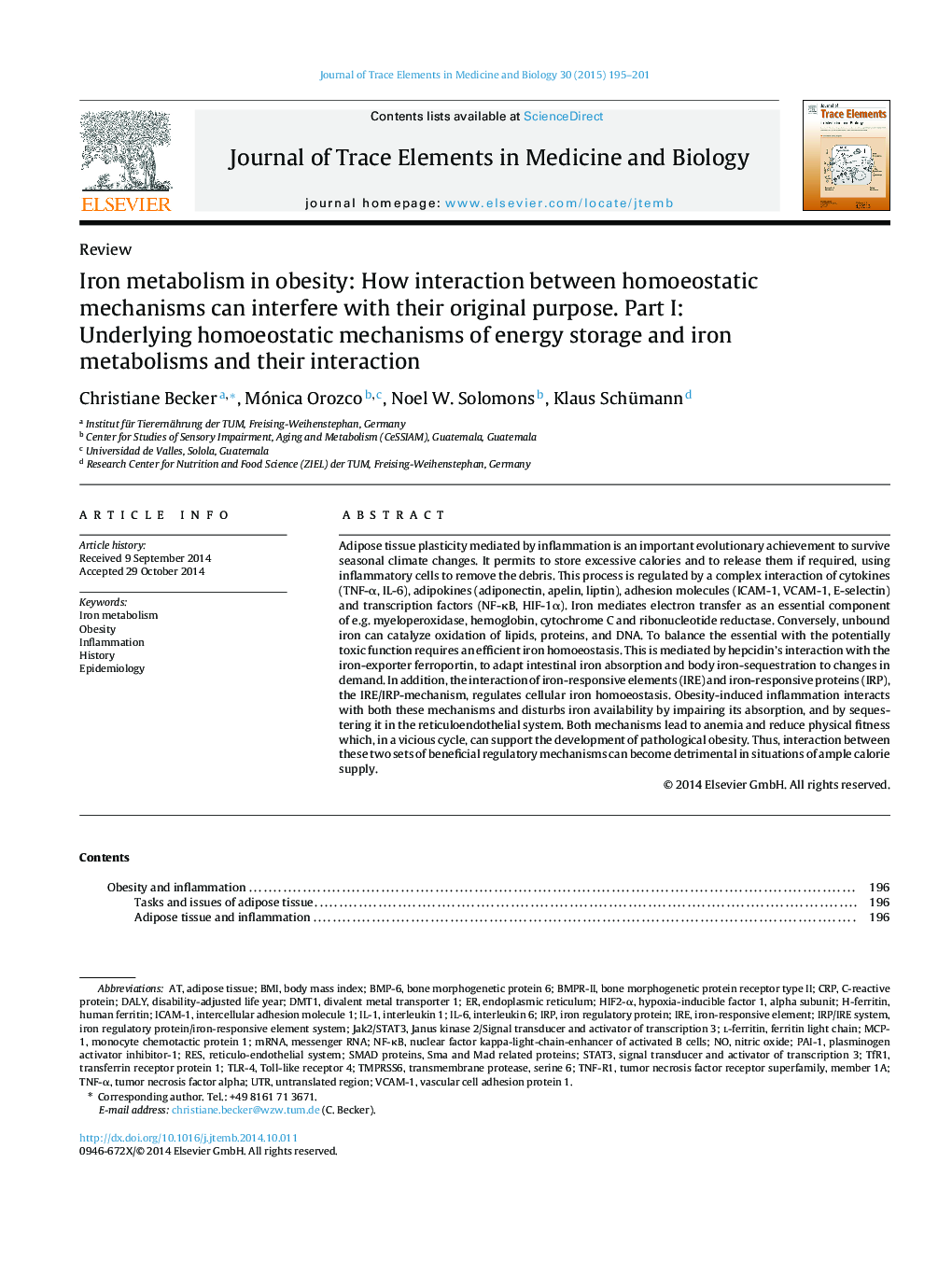| Article ID | Journal | Published Year | Pages | File Type |
|---|---|---|---|---|
| 1226341 | Journal of Trace Elements in Medicine and Biology | 2015 | 7 Pages |
Adipose tissue plasticity mediated by inflammation is an important evolutionary achievement to survive seasonal climate changes. It permits to store excessive calories and to release them if required, using inflammatory cells to remove the debris. This process is regulated by a complex interaction of cytokines (TNF-α, IL-6), adipokines (adiponectin, apelin, liptin), adhesion molecules (ICAM-1, VCAM-1, E-selectin) and transcription factors (NF-κB, HIF-1α). Iron mediates electron transfer as an essential component of e.g. myeloperoxidase, hemoglobin, cytochrome C and ribonucleotide reductase. Conversely, unbound iron can catalyze oxidation of lipids, proteins, and DNA. To balance the essential with the potentially toxic function requires an efficient iron homoeostasis. This is mediated by hepcidin's interaction with the iron-exporter ferroportin, to adapt intestinal iron absorption and body iron-sequestration to changes in demand. In addition, the interaction of iron-responsive elements (IRE) and iron-responsive proteins (IRP), the IRE/IRP-mechanism, regulates cellular iron homoeostasis. Obesity-induced inflammation interacts with both these mechanisms and disturbs iron availability by impairing its absorption, and by sequestering it in the reticuloendothelial system. Both mechanisms lead to anemia and reduce physical fitness which, in a vicious cycle, can support the development of pathological obesity. Thus, interaction between these two sets of beneficial regulatory mechanisms can become detrimental in situations of ample calorie supply.
